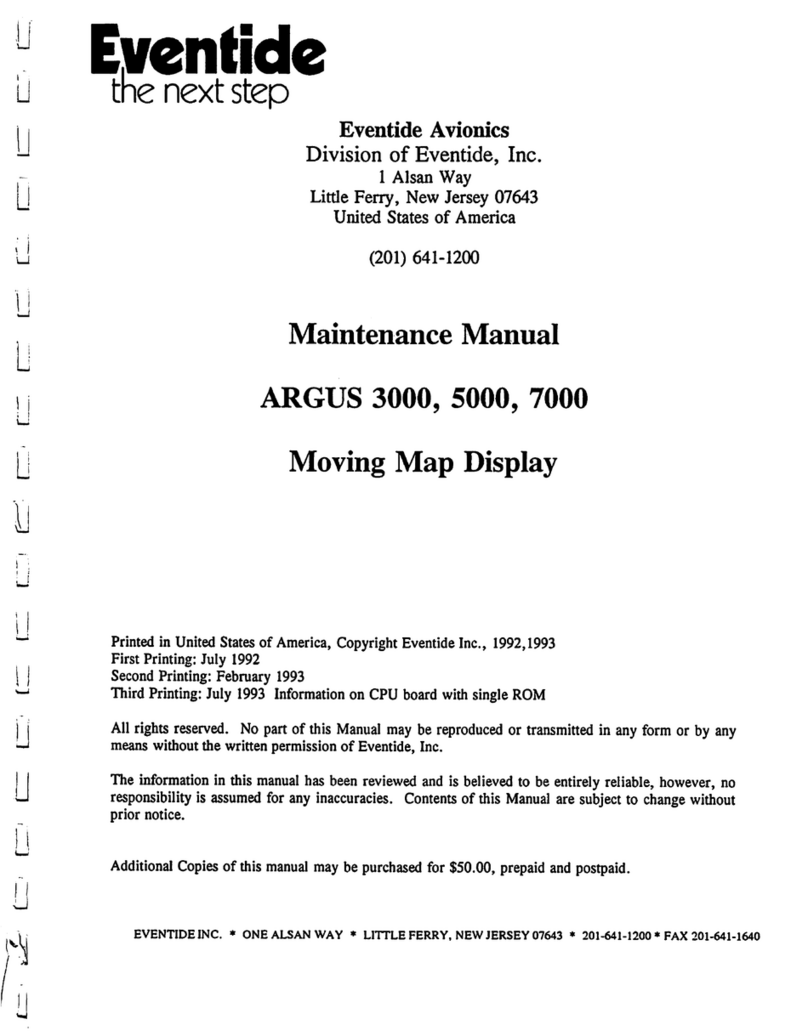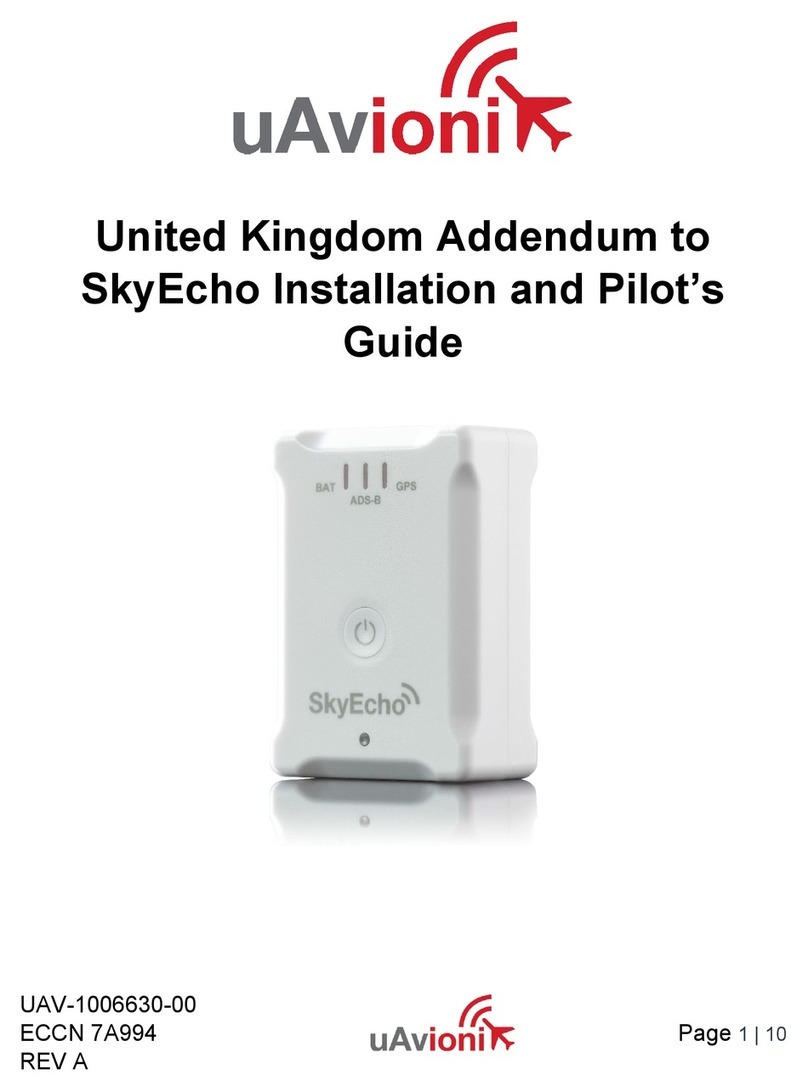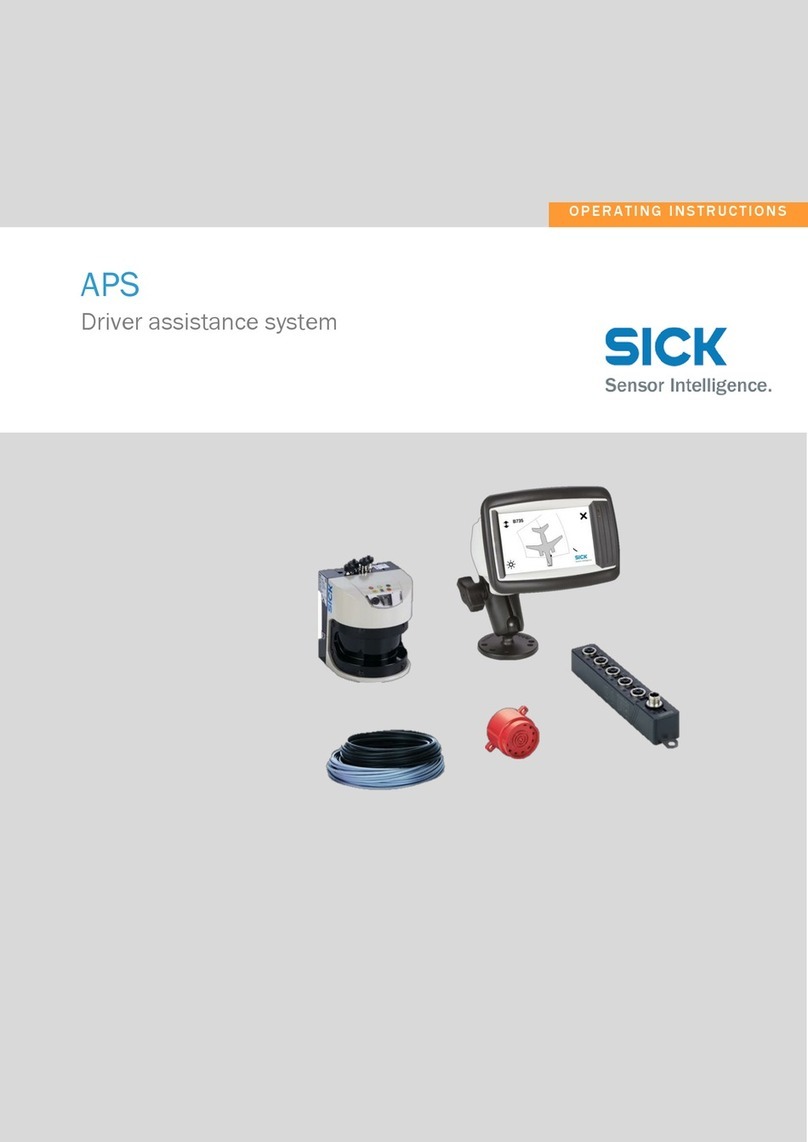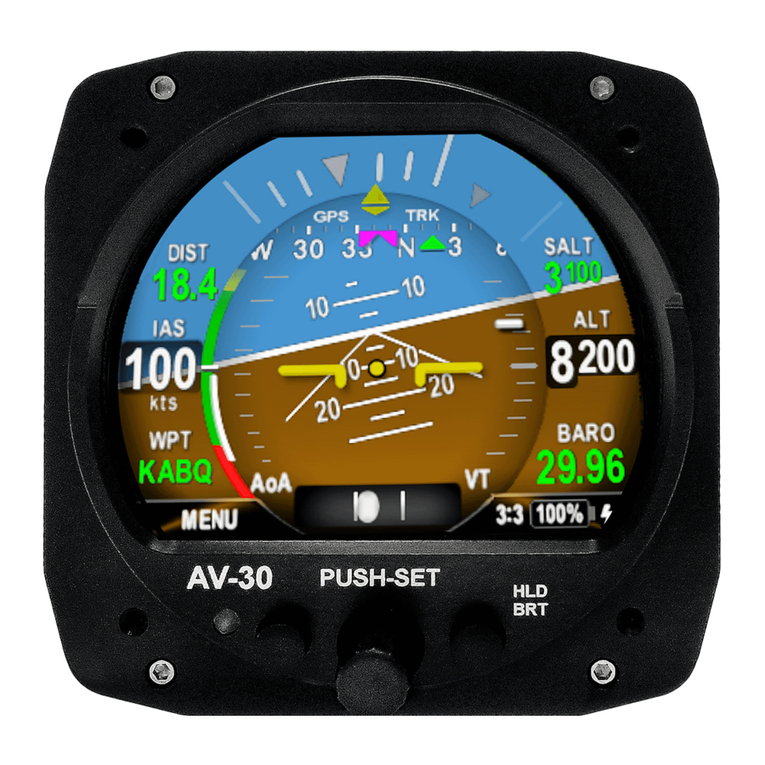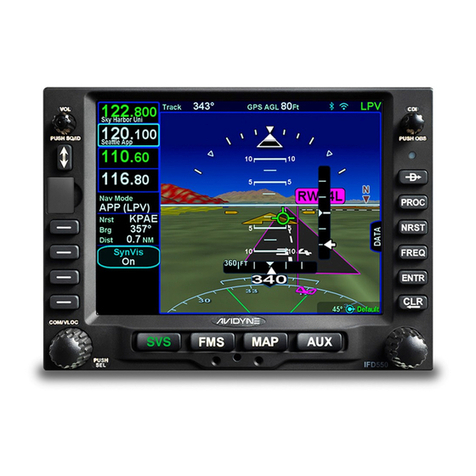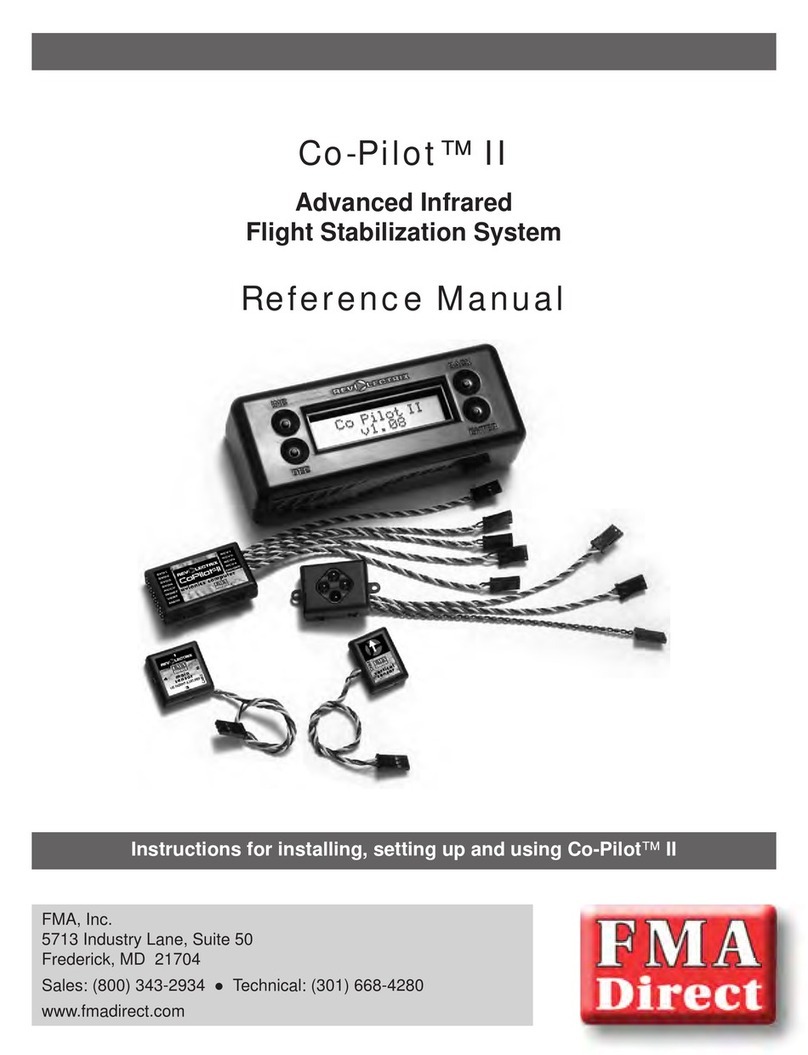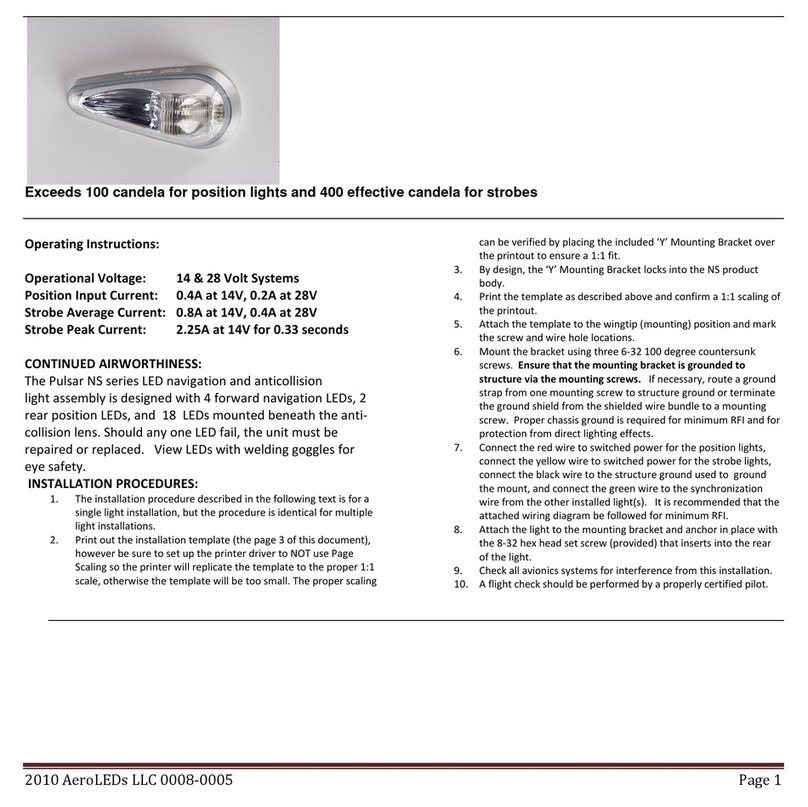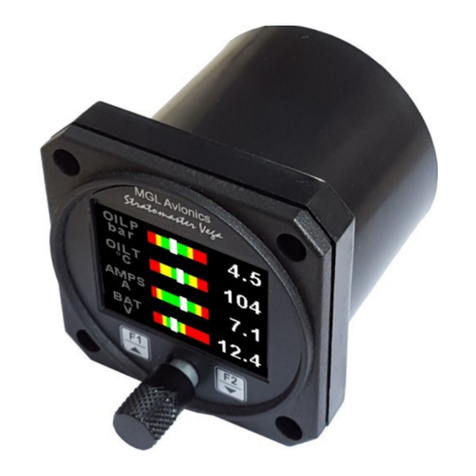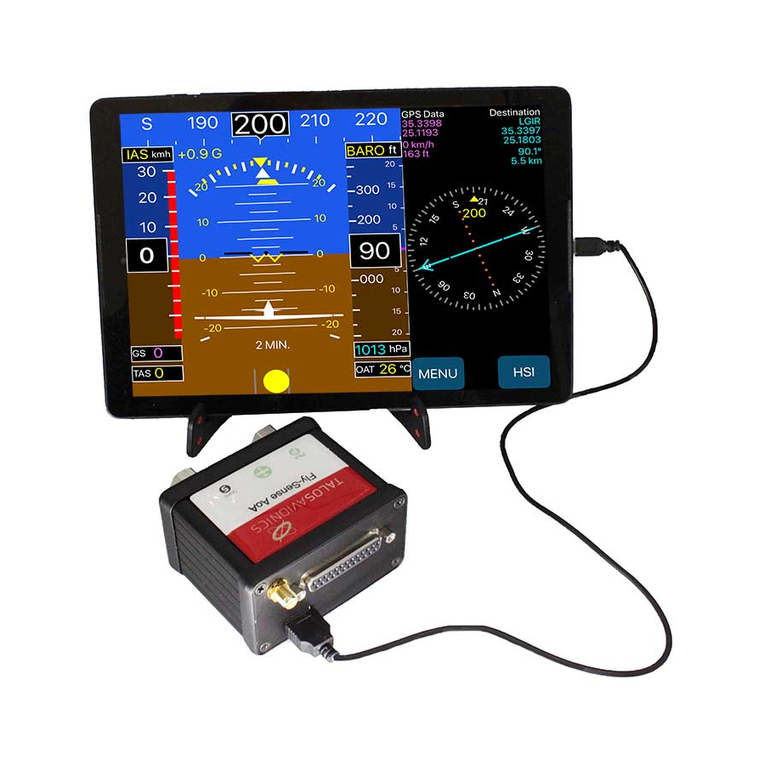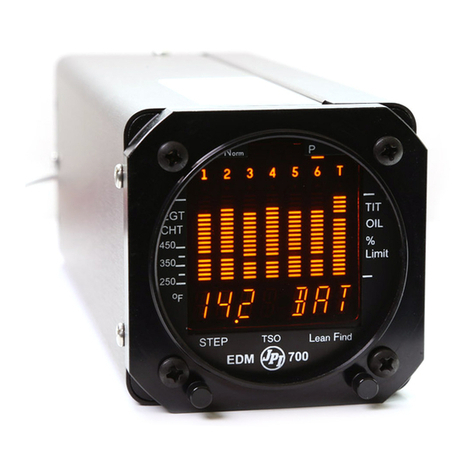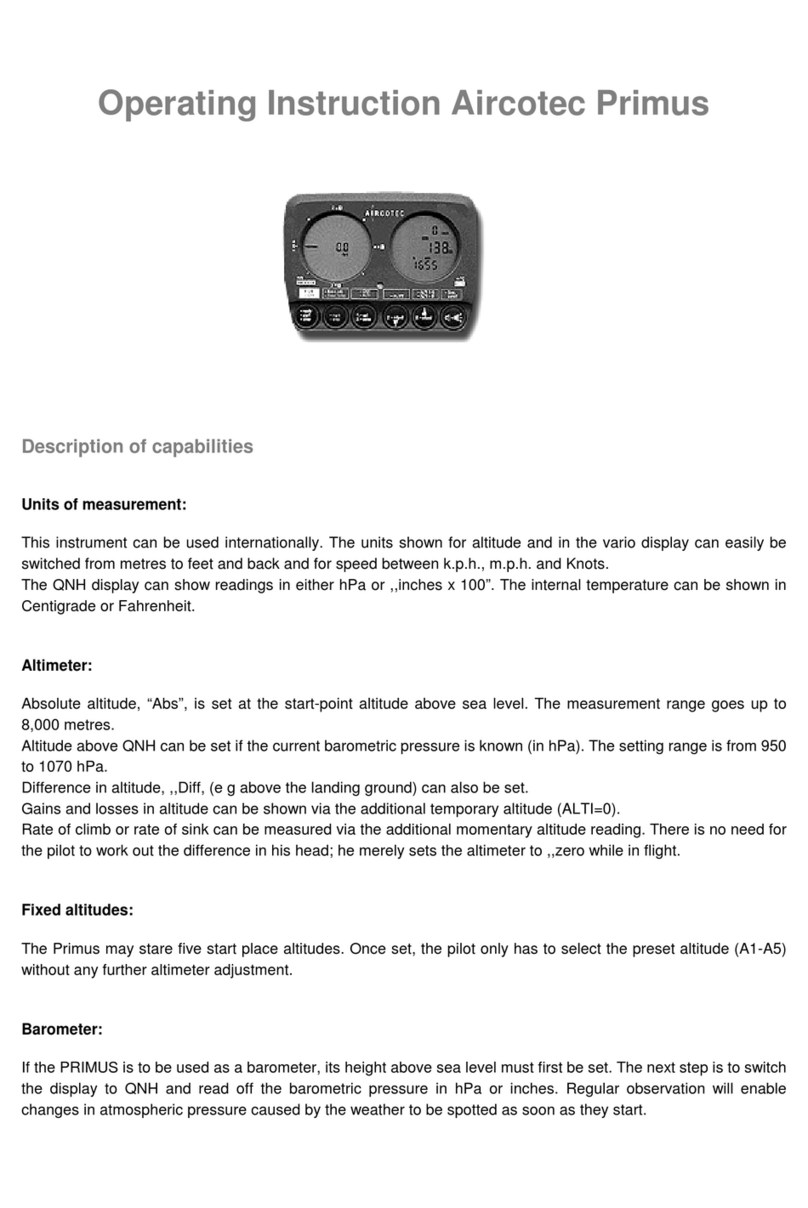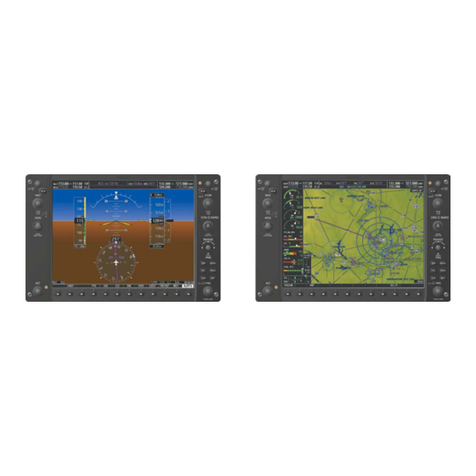Eventide ARGUS 5000 User manual

REFERENCE
MANUAL
ARGUS
5000
ARGUS
7000
With
Version
5.xx
Software
PUSH
ON
253°
BRG
TK
183
KTS
15.4
NM
270°
00:05=02
CYE*
WBW\
BARTY
LYZ
111.60
HAYED
Nll@l
4'Egj
CYE-n
R17°TE
DEP/5
s
fr
L[
N
F
0
u
DEP
ENR
ARR
AUX
E
(ARGUS
50001
First
Printing:
September
1997
Second
Printing:
July
1999
Argus®
is
a
registered
trademark
of
Eventide
Inc.
Copyright
1987-1997,
Eventide
Inc.,
1
Alsan
Way,
Little
Ferry
NJ
07643,
USA
Phone:
201-641-1200
Fax:
201-641-1640
Email:
World
Wide
Web:
http://www.eventide.com
July
1999
Argus
5000/7000
Ver. 5.xx
Reference
Manual
Part#141003

ARGUS
7000
(actual
size)
1
253
15
CYE
236°
9
BRG
4
NM
»
\
/5.0
LVZ
111.
HAYED
II
1
41GS
TK
183
KTS
}
270°
00:05=02
WBV/\
\
ABARTY
60
l@llll
R17°TE
3
CYE-n
'
DEP/5
J
-SB
DEP
ARR
PUSH
ON
July
1999
Argus
5000/7000
Ver. 5.xx
Reference
Manual
Part#141003
ii

Reference
Manual
Revisions
The
original
date
of
printing
of
this
reference
manual
appears
on
the
cover
page.
The
original
Argus
5000/7000
software
version
covered
by
this
manual
is
VERSION
5.0x.
When
this
manual
is
reprinted
in
its
entirety
the
cover
date
will
change.
The
\J
software
revision
may
change,
depending
upon
the
current
version.
Revisions
will
be
issued
for
this
manual
as
necessary,
either
to
correct
errors
or
to
update
it
for
new
Argus
software
versions.
Revisions
are
accomplished
by
sending
the
registered
owner
one
or
more
revision
pages
to
replace
the
corresponding
manual
page(s).
This
page
is
reserved
to
indicate
the
current
revision
of
the
manual.
The
balance
of
the
sheets are
placed
in
the appropriate
portion
of
the
manual
according
to
the
instructions
supplied
with
the
revision
material.
Update
Note
If
you
are
re-installing
your
Argus
after
a
factory
or
dealer
software
upgrade,
it
is
important
to
review
the
SETUP
pages
to
confirm,
or,
if
necessary,
reselect,
the
navigation
receiver
connected
to
the
Argus.
The
SETUP
section
has
an
area
for
i
recording
the
installed
setting
on
your
Argus.
Confirm
that
it
is
filled
out
before
^"^
relinquishing
your
Argus.
July
1999
Argus
5000/7000
Ver.
5.xx
Reference
Manual
Part#141003
iii

Limitations
When
the
Argus
is
powered
ON,
the
"LIMITATIONS"
screen
appears.
Please
note
this
important
information.
These
limitations
are
discussed
in
detail
later
in
the
manual.
LIMITATIONS
ACCURACY
OF
THIS
DISPLAY
IS
AFFECTED
BY
ITS
ASSOCIATED
GPS
OR LONG-RANGE
NAVIGATION
SYSTEM,
AIRCRAFT
HEADING
AND
INTERNAL
DATABASE.
ADF/VOR
APPROACHES
MUST
BE
CONDUCTED
IN
ADF/RMI
MODE
ONLY.
DEPRESS
ANY
BUTTON
TO
MONITOR
SELF-TEST
Argus
Limitations
Database
Expiration
If
the
Argus
database
has
expired,
two
lines
in
reverse
video
appear
at
the
bottom
of
the
screen
after
selftest.
Note
that
the
database
has
expired
and
press
any key
to
continue.
IFR
flight
using
an
expired
database
is
not
approved.
ARGUS
5000
MOVING
MAP
DISPLAY
APPROVED
FOR
VFR
USE
ONLY.
USE
NOT PERMITTED
FOR
IFR
FLIGHT.
AERONAUTICAL
CHARTS
MUST
BE
AVAILABLE
AS
REQUIRED
BY
LAW.
I8-DEC-97
17:08:55
ARGUS
5000
SN
001234
PROGRAM
VER.05.00
DBASE
CONFIG:
29
EXPIRED
ON
01-JAN-97
PUSH
KEY
TO
CONTINUE
©1987-96
EVENTIDE
INC.
1
Database
Expired
July
1999
Argus
5000/7000
Ver. 5.xx
Reference
Manual
Part#141003
iv

Approvals
The
Argus
is
to
be
used
only
as
a
supplemental
navigation
instrument
for
VFR
only
except
in
accordance
with
the
following
approved
uses.
NDB
APPROACHES
The
Argus
5000
and
Argus
7000
are
approved
for
NDB
approaches
when
integrated
with
the
aircraft
heading
system
and
ADF.
The
Argus
MUST
be
used
in
ADF
MODE
when
conducting
an
NDB
approach.
VOR
APPROACHES
The
Argus
5000
and
Argus
7000
are
approved
for
VOR
approaches
when
integrated
with
the
aircraft
heading
system
and
VOR(s)
using
the
optional
Eventide
RMI
adapter.
The
Argus
MUST
be
used
in
RMI
MODE
when
conducting a
VOR
i ,
approach.
IFR
ENROUTE
NAVIGATION
The
Argus
5000
and
Argus
7000
are
approved
for
IFR
enroute
navigation
only
when
receiving
navigation
information
from
an
IFR-approved
GPS,
Loran,
or other
long
range
navigation
system,
and
the
installation
agency
has
received
approval
for
the
specific
aircraft
installation.
The
Argus
database
must
be
current
(unexpired)
when
so
used.
July
1999
Argus
5000/7000
Ver.
5.xx
Reference
Manual
Part#141003
v

Approval
Screens
After
selftest
is
complete,
one
of
three
screens
will
appear,
depending
upon
the
connected
long-range
navigation
system
and
the
approval
process
undertaken
by
the
installation
agency.
These
screens
also
show
the
date,
time
of
day,
database
expiration
date,
and
Argus
program
version.
Do
not
use
the
Argus
in
a
capacity
that
exceeds
the
approval
expressed
on
your
Argus
screen.
ARGUS
5000
MOVING
MAP
DISPLAY
APPROVED
FOR
IFR
USE
WITH
IFR
APPROVED
LONG-RANGE
NAVIGATION
SYSTEM.
AERONAUTICAL
CHARTS
MUST
BE
AVAILABLE
AS
REQUIRED
BY
LAW.
I8-DEC-96
16:27:48
ARGUS
5000
SN
001234
PROGRAM
VER.05.00
DBASE
CONFIG:
29
EFF.
DATE:
05-DEC-96
EXP.
DATE:
01-JAN-97
©1987-96
EVENTIDE
INC.
Argus
IFR
Approval
ARGUS
5000
MOVING
MAP
DISPLAY
APPROVED
FOR
VFR
USE
ONLY.
USE
NOT
PERMITTED
FOR
IFR
FLIGHT.
AERONAUTICAL
CHARTS
MUST
BE
AVAILABLE
AS
REQUIRED
BY
LAW.
18-DEC-96
16:50:55
ARGUS
5000
SN
001234
PROGRAM
VER.05.00
DBASE
CONFIG:
29
EFF.
DATE:
05-DEC-96
EXP.
DATE:
01-JAN-97
©1987-96
EVENTIDE
INC.
Argus
VFR
Approval
NAVIGATION
NOT
TO
BE
PREDICATED
ON
THE
USE
OF
THIS
SYSTEM
PENDING
FAA
APPROVAL.
AERONAUTICAL
CHARTS
MUST
BE
AVAILABLE
AS
REQUIRED
BY
LAW.
18-DEC-96
16:46:06
ARGUS
5000
SN
001234
PROGRAM
VER.05.00
DBASE
CONFIG:
29
EFF.
DATE:
05-DEC-96
EXP.
DATE:
01-JAN-97
©1987-96
EVENTIDE
INC.
Argus
No
Approval
July
1999
Argus
5000/7000
Ver.
5.xx
Reference
Manual
Part#141003
vi

Table
of
Contents
Reference
Manual
Revisions
1-iii
Approvals
1-v
Section
1:
Introduction
to
the
Argus
Moving
Map
Display
1-1
GPS
"Training"
Modes
and
Argus
Home
Use
1-4
Section
2:
The
Basics
1-5
Keeping
your
Argus
in
Good
Condition
1
-6
Argus
Front
Panel
Controls
and
Indicators
1-7
Remote
Switch
Operation
1-8
The
Argus
Screen
1-9
A
Sample
First
Flight
with
the
Argus
1-10
Navigation
Data
Display
...
The
Upper
and
Lower
Windows
1-16
Minimum
Safe
Altitude
Display
1
-21
Heading
and
ADF
Operation
1-23
Heading
Display
1-26
ADF
Display
1-27
Section
3:
The
MAP
1-31
PLAN
Mode
1-32
DEParture
Mode
1-34
ENRoute
Mode
1-36
ARRival
Mode
1-39
Ground
Navigation
Ranges
1
-42
PLAN
VIEW
Mode
1-44
True
North
Up
1
-44
EMERgency
Mode
1-46
Control
Redefinition
in
EMERgency
1
-47
Summary
of
Operation
1.49
Section
4:
Map
"Objects"
1-51
July
1999
Argus
5000/7000
Ver.
5.xx
Reference
Manual
Part#141003
vii

Waypoints,
Courselines
and
the
Simulated
CDI
Courselines
in
"Direct
To"
Mode
Courselines
in
Flight
Plan
(LEG)
Mode
Waypoint
Display
on
the
Argus
CDI
and
TO/FROM
Indication
Special
Use
Airspace
Airways
Seaplane
Bases
Heliports
Airspace
Fixes
(Intersections)
Section
5*
Flight
Planning
and
Recording
User
Waypoints
and
Flight
Planning
Overview
of
the
Flight
Planning
Software
Waypoints
Selecting
a
Waypoint
Creating
a
User
Waypoint
Navigating
"DIRECT
TO"
Waypoints
Sorting
and
Storing
Waypoints
Flightplans
Creating
a
Sample
Flightplan
Entering
Waypoints
by
Name
Copying
Flightplans
Using
a
Flightplan
Flying
The
Demo
Flightplan
from
TEB
to
SWF
In-Flight
Changes
to
the
Flightplan
RESET
P.P.
TO
(CENTER
CDI)
function
User
Waypoints
Accessing
the
Argus
Database
Housekeeping
Efficient
Non-Volatile
Memory
Use
The
Flight
Recorder
Displaying
a
Flight
Section
6:
Database
Information
and
Pilot-Selectable
Features
1-52
1-52
1-52
1-53
1-54
1-57
1-61
1-63
1-64
1-65
1-67
1-68
1-69
1-71
1-72
1-75
1-77
1-78
1-79
1-79
1-80
1-84
1-86
1-88
1-89
1-94
1-97
1-99
1-101
1-102
1-103
1-105
1-109
July
1999
Argus
5000/7000
Ver.
5.xx
Reference
Manual
Part#141003
viii

SELect
and
INFOrmation
Modes
1-110
Airport
Traffic
Areas
1-118
Latitude/Longitude
Display
1-118
AMEND
Mode
(Pilot
Selectable
Display
Features)
1-119
Simulated
Flight
1-128
Section
7:
Option
Information
1-131
Appendix
1:
Database
Update
1-155
Appendix
2:
Navigation
Receiver
Information
1-158
Appendix
3:
Differences
Between
The
Argus
5/7000
and
Argus
5/7000/CE
1-171
Appendix
4:
Theory
Of
Operation
1-174
Appendix
5:
In
Case
Of
Trouble
1-176
i
'
Appendix
6:
Obtaining
Factory
Service
1-181
Appendix
7:
Warranty
1-183
Section
9:
SETUP
and
INSTALLATION
1-185
SETUP
Functions
1-186
SETUP
mode
1-188
SELFTEST
1-194
Troubleshooting
1-194
Product
Description,
Limitations,
and
Specifications
1-198
Product
Description
and
Limitations
1-198
Specifications
1-200
System
Components
1-202
^y
Installation
Overview
and
Guidelines
1-205
Installation
Drawings
1-210
July
1999
Argus
5000/7000
Ver.
5.xx
Reference
Manual
Part#141003
ix

Section
1:
Introduction
to
the
Argus
Moving
Map
Display
Congratulations!
You
have
just
purchased
an
Argus
moving
map
display.
You're
probably
used
to
reading
instruction
manuals
that
begin
with
"Congratulations."
Manufacturers
frequently
feel
that
their
customers
should
be
congratulated
for
their
sagacity
in
buying
whatever
the
manufacturer
is
flogging
in
preference
to
buying
whatever
inferior,
more
expensive, or
downright
useless
product
is
being
sold
by
the
competition.
That's
not
exactly
why
we're
congratulating
you,
however.
Here's
why:
By
adding
a
moving
map
display
to
your
cockpit,
you
have
immeasurably
increased
your
awareness
of
the
airspace
and
environment
in
which
you
fly.
You
will
be
free
of
the
momentary,
unsettling
concern
of
not
being
exactly
sure
about
where
you
are.
Where's
the
boundary
of
that
Class
B
airspace?
Right
there,
a
little
to
your
right.
No,
you
didn't
accidentally
go
through
it.
Are
the
VOR/DME
working
correctly?
Yes
...
they
agree
perfectly
with
the
Argus.
What
is
that
controller
doing,
telling
me
to
i
,
turn
to
a
heading
of
270°?
Oh,
I
see
where
I
am...OK.
Did
I
set
up
that
approach
correctly?
Are
the
instruments
tuned
to
all
the
right
frequencies?
Yes,
there's
the
airport
ahead
of me,
right
where
it
should
be.
If
you've
never
flown
with
the
Argus
before,
it's
a
good
bet
that
you're
about
to
become
a
more
confident,
safer,
and
happier
pilot.
For
this
we
congratulate
you!
The
Argus
Philosophy
Just
as
there's
a
good
reason
for
congratulations,
there's
a
good
reason
why
cliches
are
cliches.
It's
because,
boring
and
tedious
as
they
are,
they're
also
true.
The
cliche
in
this
case
is
"a
picture
is
worth
a
thousand
words."
We
have,
and
we
are
required
to
have,
various
charts
with
us
when
we
fly.
We
are
not
required
to
carry
the
metric
ton
of
printed
documentation
that
would
substitute
for
the
simplest
sectional
even
if
there
were
some
way
that
information
could
be
accessed
and
used.
Likewise,
our
^y
other
instruments
present
information
in
a
pictorial
format.
The
"ball"
indicator
moves
to
the
left
and
right.
There's
no
little
legend
that
lights
up
and
says
"you're
July
1999
Argus
5000/7000
Ver.
5.xx
Reference
Manual
Part#141003

skidding"
or
"you're
slipping."
And
what
would
you
do
if
there
were?
You
do
know
to
"step
on
the
ball,"
however.
GPS
navigation,
popular
and
effective
as
it
is,
is
the
navigational
equivalent
of
the
metric
ton
of
documentation.
Many
GPS
receivers
now
have
a
database
containing
much
of
the
information
distributed
among
the
Airport
and
Facilities
Directory
and
the
various
NOS
charts.
Even
so,
the
GPS
itself
can
only
display
a
tiny
bit
of
the
information
at
a given
time.
Many
force
you
to
switch
several
times
just
to
get
the
range
and
bearing
to
your
waypoint,
as
well
your
ground
track,
groundspeed,
and
estimated
time
enroute.
The
Argus,
thanks
to
its
bright,
sharp
CRT
display
shows
this
all
at
once,
and
that's
even
before
we
get
to
the
map.
When
we
do
get
to
the
map,
we
see
that
when
the
GPS
says
"WPT
XYZ
DIST
20NM
BRG
170DEG,"
the
Argus
shows
you
the
waypoint,
draws
a
line
that
represents
your
course,
and
puts
a
symbolic
airplane
(your
current
position)
on
a
map,
all
in
the
correct
geometrical
relationship.
And
if
your
waypoint
happens
to
be
an
airport,
it
even
draws
the
runways
and
shows
you
your
relationship
to
them.
Special
use
airspace
is
today's
cause
celebre.
When
one of
the
newer
GPSs
warns
you
about
an
impending
penetration,
all
it
can
do
is
extrapolate
your
present
course,
it
cannot
guess
your
intentions.
So,
you
sit
there
continually
telling
the
GPS
that,
no,
you're
not
going
to
enter
the
Class
B
airspace
and
yes,
you're
aware
of
it.
(But,
you'd
better
not
turn
off
that
warning
feature!)
The
Argus
simply
shows
you
where
it
is
and
where
you
are
in
relation
to
it.
No
questions,
no
problems,
no
inadvertent
penetration.
The
Argus
does
a
lot
more.
It
shows
you
minimum
safe
altitudes,
it
shows
you
airport
information
and
frequencies,
it
even
gives
you
a
graphical
depiction
of
your
flight
plan.
And,
we've
got
to
say
it
somewhere,
it's
an
incredibly
sexy
gadget
to
have
in
your
airplane.
We
at
Eventide
have
been
flying
with
the
Argus
for
several
years.
And
we
wont
fly
without
it.
More
to
the
point,
many
of
our
customers
say
the
same
thing.
You
probably
will,
too.
July
1999
Argus
5000/7000
Ver.
5.xx
Reference
Manual
Part#141003
2

The
Argus
Moving
Map
Display
Two
more
points
and
we'll
leave
this
introduction
and
get
on
with
operation.
The
first
is
a
caveat...
Cj
The
Argus
is
NOT
a
primary
navigation
instrument.
It
works
in
conjunction
with
a
GPS
(internal
or
external),
which
provides
position
and
other
useful
information.
The
Argus
is
a
supplemental
navigation
display.
Your
CDI
doesn't
know
whether
you're
on
a
radial
or
not;
it
is
driven
by
the
VOR
receiver.
Likewise,
the
Argus
has
absolutely
no
knowledge
of
its
present
location.
Whatever
it
is
told
by
the
GPS,
it
believes.
Its
job
is
to
take
the
latitude
and
longitude
given
it,
along
with
the
rest
of
the
data,
and
present
it
in
pictorial
form.
Because
of
inherent
inaccuracies
in
GPS
reception,
including
Selective
Availability
(SA),
your
GPS-estimated
position
can
be
from
tens
to
hundreds
of
meters
in
error.
The
GPS
manufacturers
tell
you
this,
we
tell
you
this,
and
even
your
GPS
may
tell
you
this,
either
by
lighting
the
WARN
light
or
by
giving
an
accuracy
estimate.
The
Argus
faithfully
depicts
the
precise
position
given
it
by
the
GPS.
It
is
your
job
to
understand
that,
despite
this
apparent
precision,
there
is
the
possibility
of
error,
possibly
significant,
in
your
position.
,
,
Therefore,
NEVER
attempt
to
conduct
an
approach
solely
by
reference
to
the
Argus
^
(or
the
GPS)
unless
the
GPS/Argus
combination
is
approved
for
approaches,
and do
not
attempt
to
use
the
information
on
the
Argus
screen
to
a
greater
degree
of
precision
than
is
warranted
by
the
accuracy
of
the
GPS
navigation
sensor.
The
second
point
should
be
more
comforting
...
While
you
look
at
the
rest
of
this
manual,
you
will
see
that
you
have
many
pages
yet
to
go.
If
you
read
them
dutifully
and
thoroughly,
you
will
know
essentially
everything
there
is
to
know
about
the
unit.
We
have
incorporated
many
illustrations
that
depict
the
subjects
discussed
in
the
text.
Because
almost
all
of
the
illustrations
are
complete
Argus
"screen
dumps,"
feel
free
to
browse
through
them
as
necessary
to
make
a
particular
point
clear.
There
is
a
lot
of
information
here,
because
the
Argus
is
a
very
versatile
instrument
and
there
is
a
lot
you
can
do
with
it.
^_y
So,
don't
be
daunted
by
the
manual.
Instead,
consider
the
Argus
itself.
It's
not
just
versatile;
it's
friendly!
Look
at
its
picture;
note
that
it
has,
not
counting
the
ON-OFF-
July
1999
Argus
5000/7000
Ver. 5.xx
Reference
Manual
Part#141003

Brightness
control,
exactly
four
buttons.
That's
about
1/10
as
many
as
a
basic
VCR,
and
even
fewer
than
your
microwave
oven.
Despite
the
apparent
initial
complexity
implied
by
the
length
of
this
manual,
you
will
find
it
easy,
and,
ultimately,
intuitive
to
operate.
If
you
want
to
see
farther
ahead,
press
ENRroute.
If
you
want
to
see
where
you're
going,
press
ARRival.
If
you
want
to
look
around
as
you're
taking
off,
press
DEParture.
But
we're
getting
ahead
of
ourselves.
Please
read
on.
GPS
"Training"
Modes
and
Argus
Home
Use
Most
GPS
receivers
have
a
"training"
or
demo
mode.
You
can
take
them
home,
connect
them
to
a
small
power
supply,
and
actually
operate
them
outside
the
aircraft
using
internally-generated
courses.
The
Argus
also
has
a
"demo
mode"
that
allows
you
to
operate
it
and
experiment
with
its
features
with
no
external
connections
other
than
a
power
source.
By
running
the
Argus
with
or
without
your
GPS,
in
the
comfort
of
your
armchair
and
without
the
distractions
of
flying,
you
will
be
able
to
experiment
more
and
learn
faster.
(Nothing
you
can
do
from
the
front
panel
can
damage
the
Argus,
so
experiment
all
you
want.)
You
can
actually
set
up
the
same
situations
depicted
in
this
manual
and
fly
complete
routes
where
we
only
show
"snapshots."
To
use
the
Argus
at
home,
you
need
a
power
supply
and
a
simple
wiring
harness
that
can
be
supplied
by
your
installer
or,
if
you're
technically
inclined,
built
at
home.
The
Argus
requires
between
12
and
28
volts
DC
at
less
than 15
watts,
and
most
modern
panel-mount
nav
receivers
have
comparable
requirements.
A
power
supply
and
appropriate
connectors
can
be
purchased
at
your
local
Radio
Shack
store.
Other
Navigation
Receivers
Previous
versions
of
this
manual
used
the
term
LORAN
throughout
as
a
synonym
for
"navigation
receiver."
We
recommend
using
GPS
receivers
with
the
Argus
in
preference
to
LORAN
because
their
"dynamics,"
i.e.,
the
speed
at
which
they
react
to
turns
and
other
maneuvering,
is
about
an
order
of
magnitude
better.
However,
the
Argus
is
perfectly
usable
with
LORAN,
or
with
any
other
type
of
navigation
receiver
that
provides
the
proper
data.
The
Appendix
gives
a
list
of
compatible
units.
July
1999
Argus
5000/7000
Ver.
5.xx
Reference
Manual
Part#141003

Section
2:
The
Basics
This
section
introduces
Argus
operation.
Topics
covered
include:
Keeping
your
Argus
in
good
condition
Front
panel
controls
and
display.
Illustration
of
a
typical
Argus
map
screen
Explanation
of
the
items
in
the
numerical
navigation
"windows"
A
sample
"first
flight"
giving
an
overview
of
how
the
Argus
is
used
Interfacing
to
other
aircraft
systems
such
as
heading
and
ADF
July
1999
Argus
5000/7000
Ver.
5.xx
Reference
Manual
Part#141003

Keeping
your
Argus
in
Good
Condition
The
Argus
does
not
normally
require
preventive
or
corrective
maintenance.
However,
you
can
damage
it
by
not
following
certain
commonsense
precautions.
Mechanical
damage
caused
by
improper
handling
is
not
covered
under
the
warranty.
Cleaning
the
Screen
Using
isopropyl
alcohol
or
a
mild
glass
cleaner,
moisten
a
non-abrasive
wipe
(e.g.,
Baxter
Cleanroom
Wipes)
and
wipe
the
glass
using
short,
smooth
strokes.
Do
not
use
any
abrasive
material
or
aggressive
cleaners.
Acetone
and
other
organic
solvents
should
not
be
used.
Replacing
the
screen
is
a
time-consuming
and
expensive
procedure.
Removing
the
Argus
from
the
Aircraft
Panel
The
Argus
is
held
in
the
panel
by
a
clamp
tray
and
connector
contact
pressure.
To
remove
the
Argus,
loosen
the
upper
two
clamp
tray
screws,
and
pull
the
unit
out
of
the
panel
using
the
slots
machined
in
the
left
and
right
sides
of
the
Argus
panel
as
areas
to
apply
force.
Special
tools
are
available
for
this
purpose.
DO
NOT
PULL
ON
THE
ON/OFF/BRT
KNOB!
Using
the
Front
Panel
Connector
The
front
panel
connector
(behind
the
removable
cap)
is
used
for
exchanging
data
with
and
downloading
data
from
a
computer.
Before
inserting
a
plug
in
this
connector,
be
sure
the
plug
is
clean.
Getting
an
oil
film
or
other
grime
in
this
connector
can
cause
an
intermittent
contact
which
may
result
in
selftest
errors
and
other
problems.
July
1999
Argus
5000/7000
Ver. 5.xx
Reference
Manual
Part#141003
6

Argus
Front
Panel
Controls
and
Indicators
The
Argus
Moving
Map
Display
uses
very
few
controls
to
accomplish
quite
a
bit.
This
section
covers
the
physical
description
of
the
controls
and
CRT.
A
detailed
description
of
the
display
and
of
the
function
of
each
control
is
provided
elsewhere
in
this
manual.
The
Argus
CRT
The
CRT
presents
the
moving
map
and
all
other
information
to
the
pilot.
It
is
a
bright,
high
resolution
display
that
can
be
viewed
in
direct
sunlight
or
adjusted
for
comfortable
night
viewing.
The
Argus
5000
useable
viewing
area
is
1.7
inches
wide
by
2.3
inches
high;
the
7000
is
2.1
by
3
inches.
While
this
may
seem
small,
its
exquisite
sharpness
and
the
close
viewing
position
make
it
perfect
for
use
as
a
navigation
display.
The
Argus
Operating
Controls
The
DEP
button
places
the
Argus
in
the
DEParture
mode.
Additional
strokes
increase
the
display
range.
Holding
the
button
in
cycles
the
display
through
decreasing
ranges.
push\
ON
S
I
0
N
O
DEP
Bffi
ARR
AUX
o
\
E
M
E
V
Argus
5000
Control
Layout
The
ENR
button
places
the
Argus
in
the
ENRoute
mode.
Additional
strokes
increase
the
display
range.
Holding
the
button
in
cycles the
display
through
decreasing
ranges.
The
ARR
button
places
the
Argus
in
the
ARRival
mode.
Additional
strokes
decrease
the
display
range.
Holding
the
button
in
cycles
the
display
through
increasing
ranges.
The
AUX
button
acts
like
a
"shift"
key.
It
redefines
the
operation
of
the
other
buttons:
Holding
AUX
while
pressing
DEParture
SELects
facilities
for
range
and
bearing
display,
and
for
subsequent
INFOrmation
viewing.
July
1999
Argus
5000/7000
Ver.
5.xx
Reference
Manual
Part#141003

Holding
AUX
while
pressing
ENR
causes
INFOnnation
on
the
facility
picked
in
the
SELect
mode
to
be
displayed
in
text
form.
Holding
both
keys
for
one
second
exits
INFO
and
returns
to
the
map.
Holding
AUX
while
pressing
ARR
places
the
Argus
in
the
EMERgency
mode.
(Or
if
in
EMERgency,
back
in
normal
operation.)
Pressing
AUX
quickly
three
times
or
holding
it
for
five
seconds
places
the
Argus
in
the
AMEND/FP
menu.
AMEND
is
exited
by
an
AUX
stroke.
Remote
Switch
Operation
In
addition
to
the
Argus
front
panel
controls,
there
is
provision
for
external
switches
to
be
connected.
They
individually
perform
the
same
functions
as
AUX/DEP
and,
AUX/ENR.
They
can
also
be
used
to
enter
alphanumeric
data
in
waypoint
and
flight
planning
operations.
These
switches
may
be
installed
on
the
aircraft
panel
or
on
the
control
yoke.
A
major
advantage
of
having
them
is
that
only
one
switch
each
need
be
activated
to
SELect
a
facility
for
on-screen
bearing
or
radial
and
distance
data
or
for
tabular
INFOnnation.
On
a
crowded
screen
this
can
take
a
while,
and
can
be even
more
tricky
in
turbulence.
Having
individual
switches
to
toggle,
or
a
yoke-mounted
two-position
switch,
makes
the
job
a
lot
easier.
If
you
do
not
have
remote
switches
for
the
SELect
and
INFOnnation
functions,
they
can
probably
be
installed
fairly
easily.
See
your
avionics
shop
or
installation
agency
for
details.
The
"PUSH
ON"
knob
is
the
Argus'
ON-OFF
switch.
Pushing
this
control
IN
applies
power
to
the
Argus.
Rotating
it
adjusts
the
brightness
of
the
Argus
CRT
and
Argus
7000
Control
Layout
backlit
buttons.
Brightness
is
increased
with
clockwise
rotation.
July
1999
Argus
5000/7000
Ver. 5.xx
Reference
Manual
Part#141003
8

The
Argus
Screen
TOP
WINDOW:
253°
Bearing
to
HAYED
intersection,
Map
oriented
to
TK,
groundspeed
is
183kts.
15.4NM
to
HAYED
intersection,
270°
ground
track,
5
minutes
and
2
seconds
to
HAYED
at
current
speed.
253°
brg
TK
183
kts
15.4
NM
270°
00:05:02
cyeII
23675.0
WBW\
BARTY
WBW
AIRPORT:
Runway
6
and
24
showing.
CYE
NDB
(selected
waypoint):
Box
shows
aircraft
5.0NM
away,
at
bearing
of
236°
BARTY
INTERSECTION:
To
upper
right
of
aircraft.
SYMBOLIC
AIRCRAFT:
Departure
mode
screen
centered
on
aircraft.
RANGE
RING:
Sparse
dotted
line-indicates
distance
5
NM
from
aircraft.
STAR
AND
LINE:
Courseline
from
aircraft
going
to
(offscreen)
HAYED
intersection.
LVZVOR:
VOR
symbol
with
frequency,
111.6
Mhz
showing.
AVP
AIRPORT:
Multiple
runways
depicted.
Underline
indicates
airport
has
tower.
BOTTOM
WINDOW:
HAYED
intersection
is
destination
waypoint,
CDI
is
showing
Argus
is
navigating
and
on-course,
and
aircraft
has
a
Right
17°
Track
Error.
The
minimum
safe
altitude
for
this
area
is
4100
feet
and
surrounding
grid
squares
have
obstructions
at
higher
altitudes
(reverse
video).
The
selected
waypoint
is
CYE-NDB,
and
the
Argus
is
using
the
DEParture
5-mile
range.
111.60
HAYED
\\\\®
CYE-n
R17°TE
DEP/5
July
1999
Argus
5000/7000
Ver.
5.xx
Reference
Manual
Part#141003

A
Sample
First
Flight
with
the
Argus
LIMITATIONS
ACCURACY
OF
THIS
DISPLAY
IS
AFFECTED
BY
ITS
ASSOCIATED
GPS
OR
LONG-RANGE
NAVIGATION
SYSTEM,
AIRCRAFT
HEADING
AND
INTERNAL
DATABASE.
ADF/VOR
APPROACHES
MUST
BE
CONDUCTED
IN
ADF/RMI
MODE
ONLY.
DEPRESS
ANY
BUTTON
TO
MONITOR
SELF-TEST
As
an
introduction
to
the
Argus,
let's
take
a
short
flight.
Seat
belts
and
shoulder
harnesses
fastened?
When
you
turn
on
the
Argus,
the
first
thing
you
see
is
the
"LIMITATIONS"
screen.
Please
read
it
now
(upper
left).
After
the
Argus
passes
its
self
test,
a
second
screen
(lower
left)
giving
information
about
the
unit
is
displayed;
it
reminds
you
that
you
must
have
your
charts
with
you
to
be
legal.
This
screen
also
tells
you
the
expiration
date
of
the
database.
Once
you
have
pressed
any
button,
one
of
two
messages
that
warn
you
of
difficulties
with
the
GPS
may
appear.
If
the
GPS
hasn't
been
turned
ON,
the
LRN
DATA
LOST
message
will
appear.
If
the
GPS
is
ON
but
hasnt
yet
"acquired,"
you
will
see
the
LRN
NAV
INVALID
message.
Normally
these
messages
will
disappear
quickly,
but
they
are
vital
to
alert
you
to
system
problems
and
you
should
be
aware
of
their
existence.
ARGUS
5000
MOVING
MAP
DISPLAY
APPROVED
FOR
IFR
USE
WITH
IFR
APPROVED
LONG-RANGE
NAVIGATION
SYSTEM.
AERONAUTICAL
CHARTS
MUST
BE
AVAILABLE
AS
REQUIRED
BY
LAW.
10-APR-96
1532:29
ARGUS
5000
SN
000001
PROGRAM
VER.
05.00
DBASE
CONFIG:
29
EFF.
DATE:
28-MAR-96
EXP.
DATE:
24-APR-96
©1987-96
EVENTIDE
INC.
—
BRG
TK
—
KTS
.-
NM
—:--:--
LRN
DATA
LOST
IIIIIOIIIII
—TE
—MSL
PLAN/720
—
BRG
TK
—
KTS
.-
NM
—:—:
—
LRN
NAV
INVALID
IIIIIOIIIII
--TE
---MSL
DEP/1
July
1999
Argus
5000/7000
Ver.
5.xx
Reference
Manual
Part#141003
10

So
much
for
the
administrative
stuff,
let's
go
flying!
Our
trip
today
will
be
from
N07
(Lincoln
Park
NJ)
to
ABE
(Allentown-Bethlehem
PA),
a
trip
of
some
54
nm.
If
you're
following
along
with
your
GPS
in
training
mode
at
home,
set
these
up
as
departure
and
destination
waypoints.
264°
BRG
53.7
NM
TK
—
KTS
NO
HEADING
OR
TRACK
ABE
32EHI
]
--TE
PLAN/60
departure
route.
Assuming
that
the
GPS
is
working
and
has
acquired,
the
Argus
may
show
a
display
like
that
at
the
left.
Note
that
the
bearing
and
distance
to
the
waypoint
(ABE)
is
given,
but
the
graphic
display
area
shows
NO
HEADING
OR
TRACK.
That's
because
we're
not
moving,
so
there
is
no
track
or
groundspeed.
The
mode
shown
is
PLAN,
because
that's
always
the
first
display
seen.
This
mode
"autoranges"
so
that
the
most
distant
waypoint
is
always
shown
at
the
edge
of
the
screen.
Some
GPS
models
will
give
incorrect
position
and
track
information
before
acquisition.
If
the
Argus
is
connected
to
the
aircraft
compass
system,
the
map
will
be
displayed
and
oriented
correctly
even
if
the
aircraft
isn't
moving.
As
we
begin
taxiing
to
runway
19
(ground
TK
010°),
the
PLAN
display
appears,
showing
the
destination
to
our
left.
Depending
on
the
GPS,
this
display
may
appear sooner
or
later
during
taxiing.
It
may
also
appear
somewhat
erratic
while
we're
on
the
ground
since
our
speed
will
be
low
and
the
GPS
may
have
difficulty
following
our
tight
turns
while
taxiing.
From
the
PLAN
mode
we
can
determine
how
to
proceed.
We'll
be
taking
off
on
runway
19,
so
it
would
seem
that
a
right
turnout
would
be
the
best
procedure.
Note
that
special
use
airspace
is
not
shown
in
PLAN
mode.
When we
go
to
DEParture,
we'll
see
that
we're
under
the
floor
of
the
New
York
Class
B
airspace
and
near
two
controlled
airports.
This
will
slightly
affect
the
July
1999
Argus
5000/7000
Ver.
5.xx
Reference
Manual
Part#141003
11
This manual suits for next models
1
Table of contents
Other Eventide Avionic Display manuals
Popular Avionic Display manuals by other brands
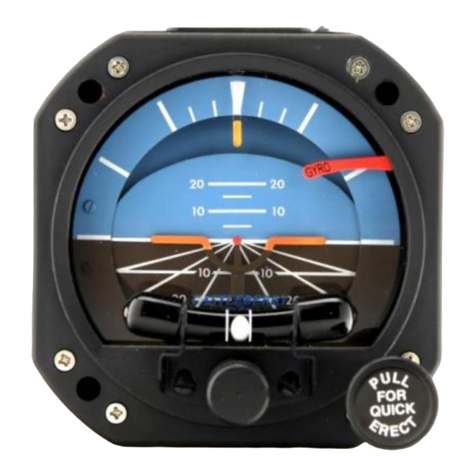
Castleberry Instruments & Avionics
Castleberry Instruments & Avionics 300-14EL Selection and Installation Guide
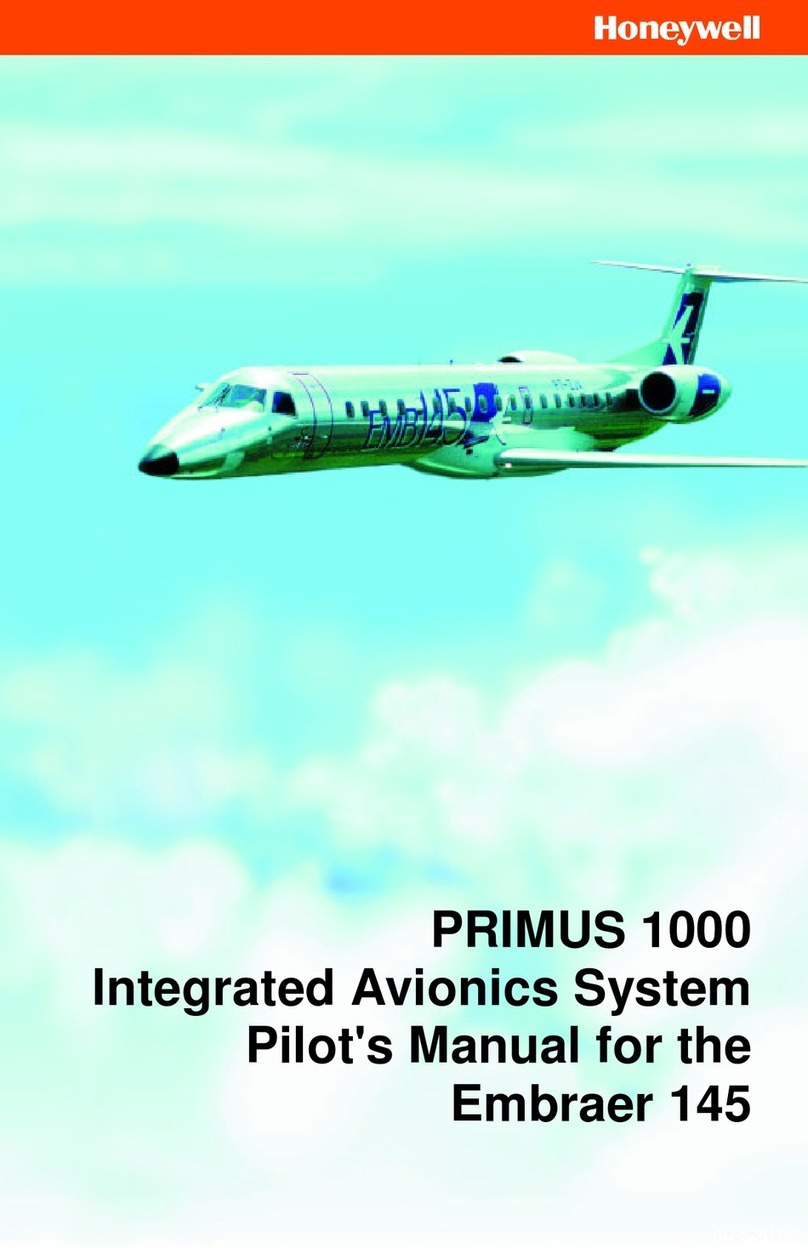
Honeywell
Honeywell PRIMUS 1000 Pilot's manual
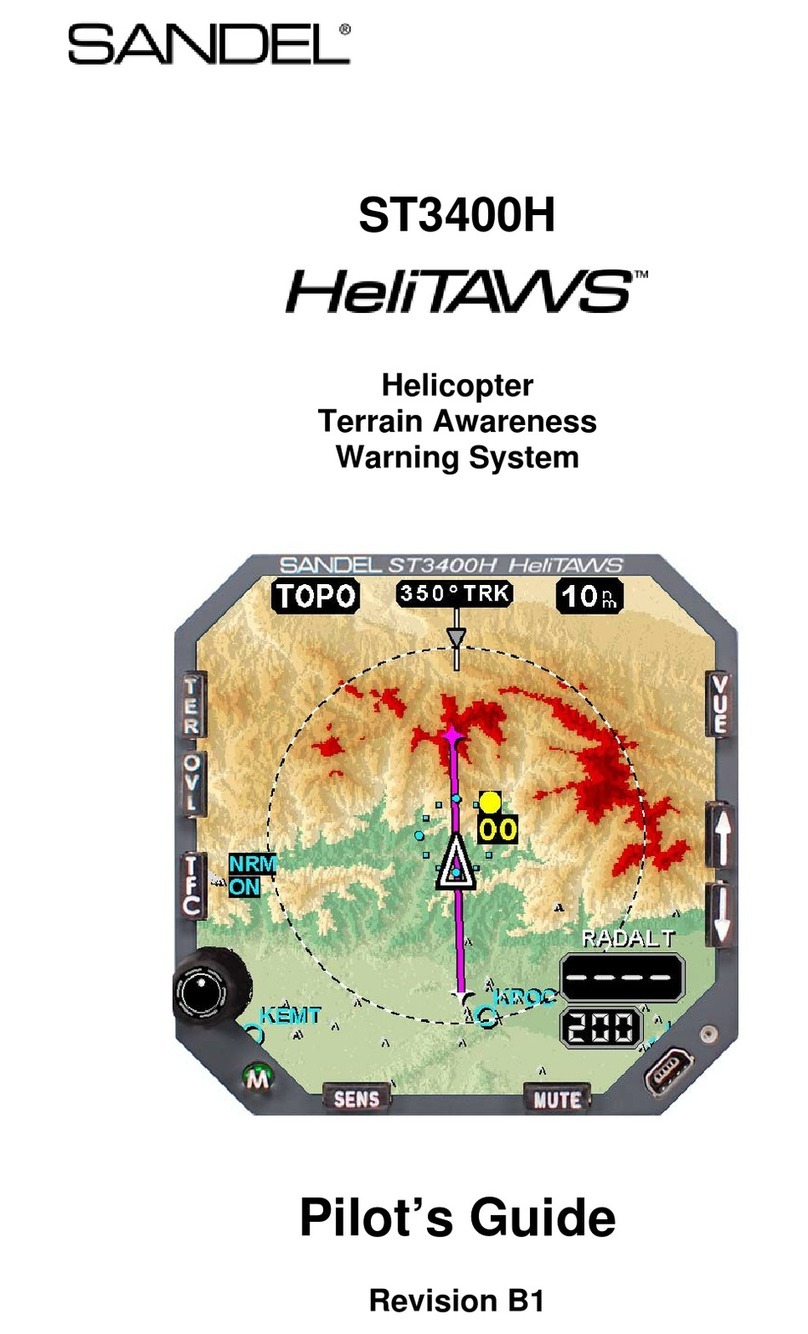
Sandel
Sandel ST3400H HeliTAWS pilot's guide
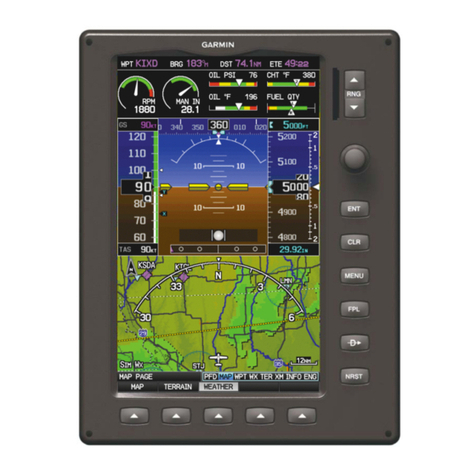
Garmin
Garmin G3X Touch installation manual
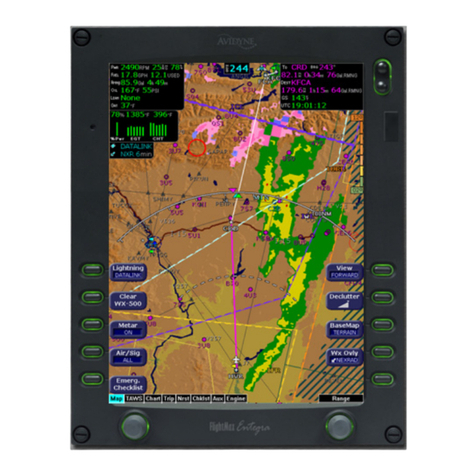
Avidyne
Avidyne Entegra EX5000 pilot's guide
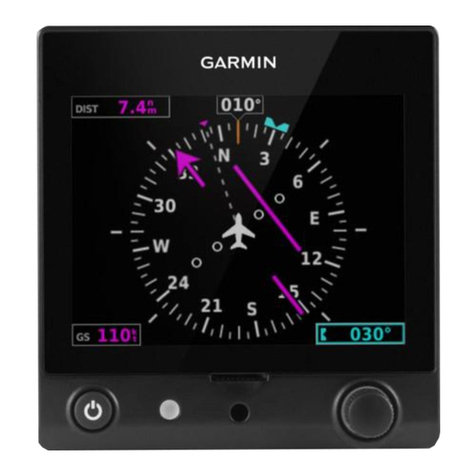
Garmin
Garmin Approach G5 - GPS-Enabled Golf Handheld user manual
